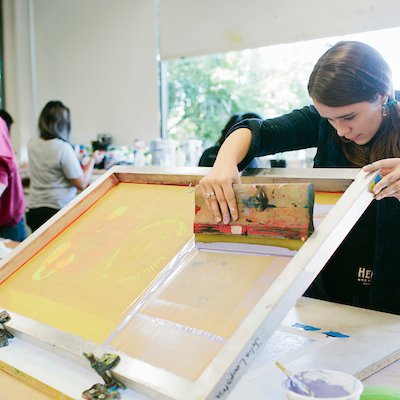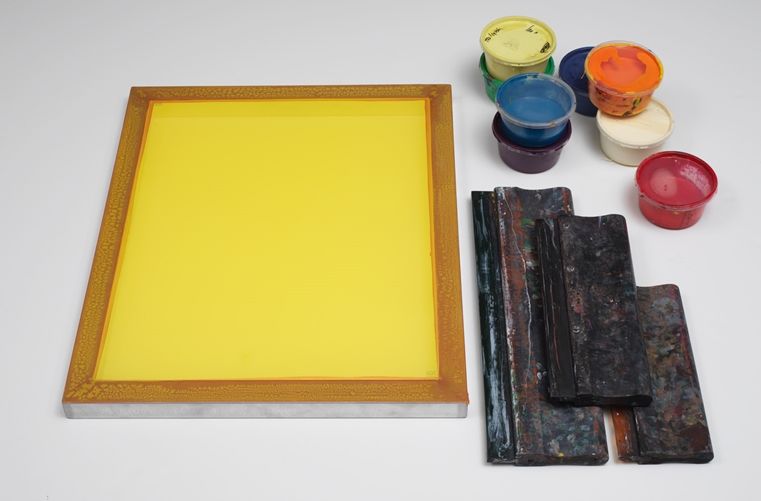ChatGPT said: How 10:9 Design Abilene is serving the community
Wiki Article
The Important Guide to Understanding Screen Printing and Its Versatile Utilizes
Screen printing has an abundant background that goes back to old times, advancing right into an innovative strategy used across different sectors today. This guide checks out the intricacies of the screen printing procedure, detailing its applications in home, fashion, and advertising décor - 10:9 Design Screen Printing Texas. Recognizing these fundamentals can open up imaginative possibility for both creative and business projects. The complying with sections will certainly reveal important pointers and methods to enhance one's screen printing undertakingsThe Background of Screen Printing
Screen printing has origins that map back centuries, its advancement mirrors the creative and technical developments of various cultures. Coming from old China, the technique was originally made use of for enhancing textiles and later infect Japan, where it came to be integral to Ukiyo-e woodblock printing. The approach moved to Europe in the 18th century, where it gained appeal among craftsmens and commercial printers. The innovation of image solution in the 20th century revolutionized screen printing, permitting more elaborate styles and greater performance. Artists like Andy Warhol additionally thrust its appeal, using the tool to develop famous jobs that mixed commercialism and great art. By the late 20th century, screen printing had actually established itself as a functional strategy, employed in fashion, advertising, and fine art. Today, it remains to evolve, integrating digital innovation and broadening its applications throughout different markets.The Screen Printing Process Explained
Screen printing transforms imaginative visions right into tangible styles with a collection of precise steps. Originally, an image is developed and after that transferred onto a screen, typically made of fine mesh textile stretched over a frame. A light-sensitive emulsion is put on the screen, which is subjected to light, solidifying in locations not covered by the picture. After washing out the unhardened emulsion, a stencil is formed.Next off, the screen is put over the substratum, whether it be fabric, paper, or another material. Ink is after that pressed through the open locations of the pattern making use of a squeegee, transferring the style onto the substratum listed below. This process can be repeated for several shades, requiring separate displays for every hue. The published thing is healed utilizing heat to guarantee the ink adheres appropriately, resulting in a resilient, vibrant layout prepared for use.
Types of Screen Printing Techniques

In addition, specialized strategies, such as discharge screen printing, get rid of dye from the textile to develop softer prints, while foil screen printing uses metal aluminum foil to attain a shiny surface (10:9 Design near me). Each strategy provides distinct characteristics, catering to different creative requirements and manufacturing scales, inevitably increasing the opportunities within the screen printing domain name
Applications of Screen Printing in Various Industries

Furthermore, the signage and marketing fields use screen printing for producing captivating display screens and banners. This technique enables bold shades and detailed layouts that catch attention. In electronic devices, screen printing is employed for applying conductive inks to motherboard, necessary for element links. The home style industry accepts screen printing to produce distinctive styles on textiles and wall surface art. Generally, screen printing functions as a vital tool across varied areas, improving items with individualized and visually enticing graphics.
Tips for Effective Screen Printing Projects
While carrying out a screen printing job, cautious focus to detail can considerably improve the final outcome. Initially, choosing top notch materials is important; this consists of the screen, inks, and substrates. Using proper mesh counts can affect ink deposition and detail resolution. Preparation is similarly vital; extensive cleaning of screens and proper direct exposure times ensure crisp prints.Next, exact enrollment is vital for multi-color prints. Utilizing alignment devices can help attain accurate layering. Additionally, testing prints on scrap products prior to production helps determine prospective problems without wasting resources.
Frequently Asked Inquiries
What Materials Are Best for Screen Printing on Textile?
Cotton and polyester blends are excellent for screen printing on textile because of their resilience and ink absorption. Additionally, specialized textiles like silk or canvas can create special appearances and coatings, boosting the general design quality.Just how Do I Tidy and Maintain Screen Printing Devices?
To keep and cleanse screen printing tools, one must on a regular basis wash displays with proper solvents, check mops for wear, lube moving components, and store all products in a completely dry, dust-free setting to prolong their life-span.What Are the Environmental Effects of Screen Printing?
Screen printing can have substantial ecological influences, including chemical waste from solvents and inks, water use during cleansing processes, and power intake. Sustainable practices and eco-friendly products are vital for decreasing these adverse impacts.Can Screen Printing Be Done at Home Successfully?
Screen printing can be successfully done at home with the appropriate materials and methods. Enthusiasts can produce quality prints, though success depends upon their ability degree, tools, and understanding of the process included.
What Are the Costs Connected With Beginning a Screen Printing Service?

Beginning a screen printing service involves costs for tools, materials, and work area. Preliminary costs commonly vary from a few hundred to a number of thousand bucks, depending on the scale, top quality of equipment, and desired manufacturing capability.
Screen printing has an abundant background that dates back to old times, progressing into an innovative technique used across numerous sectors today. Another method, rotary screen printing, uses round screens, promoting continuous printing on material rolls, therefore enhancing efficiency for large manufacturings. Additionally, specialty methods, such as discharge screen printing, eliminate color from the material to create softer prints, while aluminum foil screen printing uses metallic aluminum foil to achieve a glossy surface. In the style sector, screen printing is extensively made use of to develop vivid designs on clothing, enabling brands to showcase their distinct designs. Cotton and polyester blends are suitable for screen printing on material due to their durability and ink absorption.
Report this wiki page